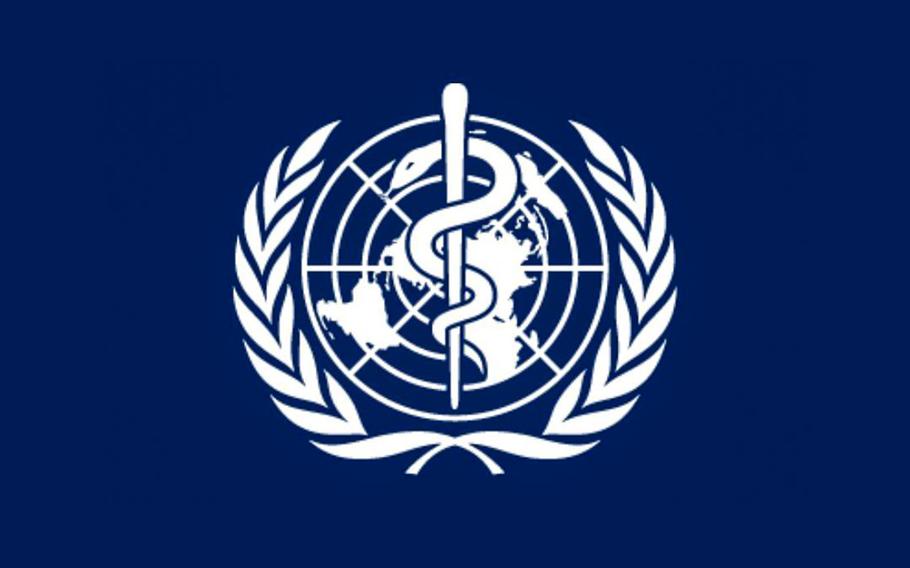
World Health Organization logo (Facebook)
The World Health Organization on Tuesday declared coronavirus subvariant JN.1 a variant of interest “due to its rapidly increasing spread.”
It made up about 3 percent of all coronavirus cases in early November, but 27.1 percent a month later globally, the WHO said. It anticipates JN.1’s emergence may cause an increase in cases, especially in countries experiencing winter.
The WHO designation came after emergency room visits in the United States for covid-19, influenza and respiratory syncytial virus collectively reached their highest levels since February, The Washington Post reported last week, ahead of the holiday period.
Coronavirus is constantly evolving into forms that are more transmissible or more adept at infecting people who were vaccinated or previously infected. Those attributes help variants outcompete others in circulation and fuel waves of infection. But the scenario scientists have dreaded has yet to materialize in the last two years: a highly contagious variant deadlier than the ones before it.
What is JN.1?
JN.1 was first reported in August. It evolved from variant BA.2.86, a descendant of omicron, the variant of the coronavirus that wreaked havoc in early 2022. BA.2.86 did not spread widely, but it worried experts because it had dozens of mutations on its spike protein. JN.1 is very similar with an additional spike protein mutation.
That’s concerning because the spike protein acts like a key to enter a cell, and vaccines train the body to change the locks. When the spike protein morphs into a much different foe, it’s harder for neutralizing antibodies to recognize it and fight it off. But those antibodies are just the first line of defense, and other parts of the immune system can still fight the virus and reduce the severity of infection.
The WHO does not expect JN.1 to bring a significant additional public health risk based on available evidence. Its overall risk evaluation of the variant is “low.”
“While there is a rapid increase in JN.1 infections, and likely increase in cases, available limited evidence does not suggest that the associated disease severity is higher,” it said.
What are JN.1’s symptoms?
It is not known whether JN.1’s symptoms differ significantly from other variants, and there is no indication it is more severe, according to the Centers for Disease Control and Prevention.
“The types of symptoms and how severe they are usually depend more on a person’s immunity and overall health rather than which variant causes the infection,” it said.
General covid-19 symptoms include fever, chills, coughing, shortness of breath, difficulty breathing, fatigue, muscle aches, headache, loss of taste or smell, sore throat, congestion, runny nose, nausea, vomiting and diarrhea, according to the CDC.
Do vaccines offer protection against JN.1?
The CDC recommends getting an updated coronavirus vaccine to increase protection against JN.1. The agency said existing coronavirus tests, treatments and vaccines are expected to work against the variant, similar to the way they work against others. The recommended vaccines in the United States are those from Pfizer-BioNTech, Moderna and Novavax.
Research published in early December that has not been peer-reviewed showed the updated vaccine formula still boosted virus-neutralizing antibodies against JN.1 and other emerging variants it was not specifically designed to target. But JN.1 was the most resistant to antibodies; that resistance compared with other variants makes it easier for it to become dominant.
Public health officials say the primary purpose of vaccines is to prevent severe disease, and the updated vaccine is still expected to soften the blow of a JN.1 infection.
Where is JN.1 spreading?
JN.1 has been recorded in 41 countries. The nations with the largest proportion of JN.1 cases are France, the United States, Singapore, Canada, Britain and Sweden, according to the WHO.
It first appeared in the United States in September and is the fastest growing variant in the country, the CDC said on Dec. 8. The CDC estimated JN.1 accounted for 21 percent of U.S. cases in the two-week period ending Dec. 9, including 32 percent of cases in the Northeast.
Experts are watching whether the variant, which appears to spread more efficiently, will exacerbate the usual end-of-year covid wave.
“It’s coming at the same exact time in which our social networks are expanding as we travel and visit with people we don’t normally see,” said Katelyn Jetelina, an epidemiologist who publishes a public health newsletter, Your Local Epidemiologist.
JN.1 might be another reason to consider taking additional precautions during the respiratory virus season, such as masking at airports, getting vaccinated, testing before seeing elderly relatives and keeping windows open for gatherings when the weather outside isn’t too frightful.
“I don’t think it means we need to cancel our holidays,” Jetelina added. “It certainly isn’t going to be a tsunami like we saw with omicron. It’s just less than optimal timing.”
What is a variant of interest?
The WHO designation “variant of interest” is applied to variants of the coronavirus that appear to be growing faster than others and that have genetic changes that are predicted or known to affect virus characteristics. These could include transmissibility, virulence, antibody evasion, susceptibility to therapeutics and detectability.
The designation triggers responsibilities for the WHO and its member states related to monitoring and gathering and sharing information.
It is less serious than “variant of concern,” which is applied to strains that are more severe, cause a substantial burden on the health system, or that vaccines are less effective against. These have Greek letter names such as delta and omicron.